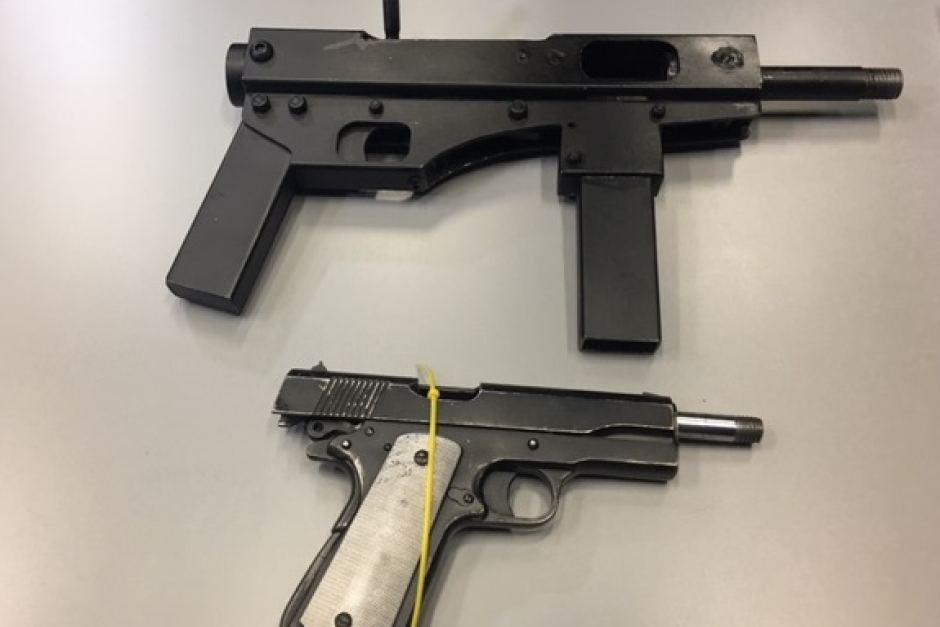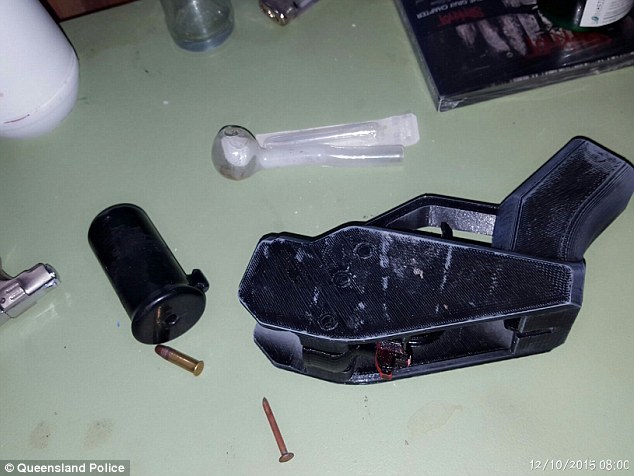
A series stories suggest that some druggies on the Gold Coast of Australia recently 3D printed submachine guns. I Don’t Think So.
Reading several of these reports was a bit disturbing. Apparently drug gangs were using “3D printers” and a “Drill press” to produce unauthorized weapons.
Specifically they were making Uzis, a popular submachine gun of Israel design. Such a weapon can fire 500 rounds per minute, making it a very dangerous thing to have in the hands of criminals.
But hold on a second. A 3D printer is making Uzis?
A 3D printed Uzi is going to fire 500 rounds per minute?

This is entirely ridiculous. The experiments in 3D printed weapons performed by a few thus far have been able to produce barely useable weapons capable of firing a shot or three before they break, wear out or explode in the operator’s hand.
They’re made of plastic. They are not going to shoot 500 rounds per minute. There is a good possibility such a print might not fire ANY rounds.
Perhaps they were using a 3D metal printer? Yes, you could print far more durable metal components with an industrial metal 3D printer, but you’d have an enormous amount of finishing work to transform the rough, green printed parts into precision gun parts.
Oh, and you’d need the 3D metal printer, too.
Which costs over A MILLION DOLLARS.
I don’t know about you, but if I was a criminal and could afford a million dollars for a 3D printer that I’d use only a few times, I wouldn’t need to be a criminal. Just save the million!
I dug a bit deeper into this story and found a telling quote within the ABC story:
There’s a machining lathe located there, drill presses, other parts of firearms were also located at the scene.
Aha. These weapons were NOT produced on 3D printers, which were found on the scene. They were obviously produced by traditional metal equipment, which is inexpensive and can be found literally anywhere. In fact, the images of these weapons do not appear to show ANY plastic parts at all.
I wish the media would not jump so strongly into incorrect conclusions here. These weapons were not and could not have been produced by 3D printers.
Via ABC
[UPDATE] It seems that in addition to metal submachine guns being discovered during the raids described above, a part from the “Liberator” 3D printed gun were found as seen in this image. This particular weapon design is old news and while it may be able to fire a single shot or two, it is not a viable weapon, and can be more expensive to manufacture than an actual metal gun. What this event does show is that a criminal attempted to 3D print a gun – probably inspired by incorrect media reports on 3D printing, but in the end depended on traditional metal techniques to produce a functional weapon.
Readers have requested the identification of the reports of “3D printed submachine guns” referenced in the story. Note that some reports have it correct, particularly those from Australia itself, but many seem to be playing up the “3D printers are bad because they can print guns” angle and focusing on the submachines that were clearly not 3D printed. Here is a brief list of some headlines.
The Guardian – Gold Coast raids uncover 3D-printed submachine guns
Microfabrictor – 3D Printed Submachine Guns Found in Drug Raids in Australia
3ders.org – 3D printed submachine guns discovered in Australian drug bust
And there are others in a similar vein.
Guns are most easily produced using commonly available metalworking equipment found literally everywhere. You don’t need a 3D printer to make a gun; in fact, it’s a lousy way to make a gun.


